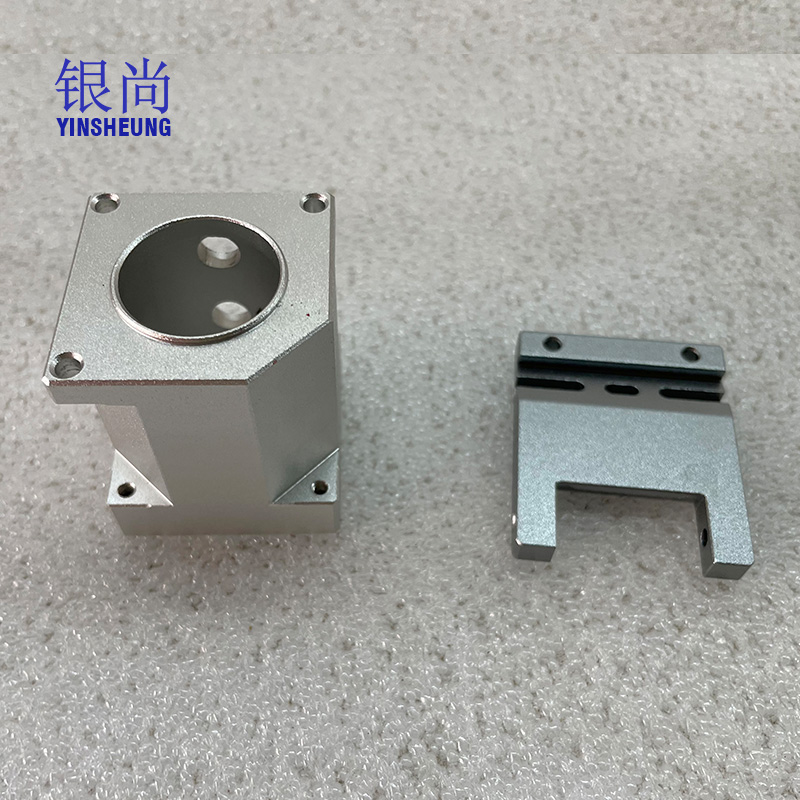The Effect of Sandblasting and Chemical Sanding on Anodizing Oxidation of Aluminum Profile Surface
The traditional surface pre-treatment process for aluminum profiles with sand surface is to use chemical sand surface method, which uses alkali etching to form a sand surface on its surface. However, this is an unreasonable process with high aluminum consumption, alkali consumption, and acid consumption.

In recent years, mechanical sand surface method has been introduced abroad for aluminum profile surface pre-treatment and has been successful. Chinese manufacturers have introduced this sand surface machine from abroad to replace matte alkali etching, improving product grade Significant results have been achieved in reducing costs and reducing environmental pollution.
However, the sand formation mechanisms of these two process methods are different, and there are important differences in the surface and surface state after surface pre-treatment, which directly or indirectly affect the performance of the anodized film.
In actual production, if other process parameters in the original etching and cleaning process are indiscriminately incorporated into the sandblasting process, or if appropriate process parameters are not determined in the sandblasting process, the final product may be unqualified.

Therefore, studying the surface and surface condition of aluminum profiles under sandblasting conditions will help establish the entire process flow and select the optimal process parameters.
1. Formation mechanism of sand surface
The essence of chemical sand surface method is to use metal materials to produce pore turbidity in a specific medium to achieve the purpose of finishing. Compared with chemical sand surface method, the mechanism of sand surface formation in mechanical sand surface method is completely different. Mechanical sand surface is to use compressed air to shoot different abrasive particles onto the surface of aluminum profiles. The mechanical sand blasting process combines the cleaning effect of sand blasting treatment and the surface strengthening effect of shot blasting treatment.
2. The Effect of Surface Morphology on the Performance of Anodized Coatings
From the formation mechanism of sandblasting sand surface, it can be seen that the sandblasting process has a significant impact on the surface morphology of aluminum profiles. We conducted on-site sampling of aluminum profiles with chemical sand surface and sandblasting sand surface before anodizing (the alkaline washing and neutralization process parameters after the formation of sand surface in the surface pretreatment process are the same) at a domestic factory, and tested the two samples using a surface roughness tester and scanning electron microscopy (SEM), It was found that there are significant differences in the surface morphology parameter values of aluminum profiles under two different process conditions.
We can also see another important difference: the surface roughness under sandblasting conditions is much higher than that under chemical sand surface conditions. The reason for this is related to the formation mechanism of the sand surface, which is closely related to the abrasive properties (such as particle size, material, hardness) and process parameters (such as injection pressure, compressed air injection time, and surface coverage); On the other hand, it is related to the surface microstructure.
The sandblasting process is actually a plastic processing process. Under the impact of diamond sand, the deformation of aluminum profiles is completed through crystal dislocations. In the subsequent alkaline washing process, surface corrosion basically develops along the direction of dislocations. The change in free energy required for nucleation at the dislocations is smaller than that at the defect free area, thus forming preferential corrosion on the surface of aluminum profiles, In the case of insufficient alkaline cleaning time after sandblasting, this preferential corrosion will also increase surface roughness.
Excessive roughness obviously leads to uneven thickness of the anodize oxidation film. On the other hand, due to the lower diffusion rate of the rough peak valley bottom electrolyte compared to the valley peak electrolyte, a large amount of heat is generated during the anodize oxidation process, and the valley bottom heat is more difficult to diffuse than the valley peak heat, which will make the dissolution rate of the valley bottom layer faster. This increases the pore ratio of the anodize oxidation film, reduces the adhesion, and makes it difficult to control the color difference.
If the rough peaks on the surface of aluminum profiles are compared and estimated as ideal cones or spheres, it will be found that the true surface area of sandblasted materials is much larger than that of chemical sand surface materials, which will lead to distortion of current density values. The result is distortion of anodizing process parameters, which affects the performance of the anodized film layer.
The Effect of Surface Structure on Anodize Oxidation
During the sandblasting process, the impact effect of diamond sand will cause changes in the surface microstructure of aluminum profiles. During sandblasting, the surface metal undergoes intense plastic deformation under the impact of high-speed projectiles, accompanied by crystal slip during the plastic deformation process, resulting in an increase in dislocation density within subgrains and lattice distortion.
The lattice spacing changes, and after sandblasting, a relatively fine microstructure will be obtained on the surface layer



